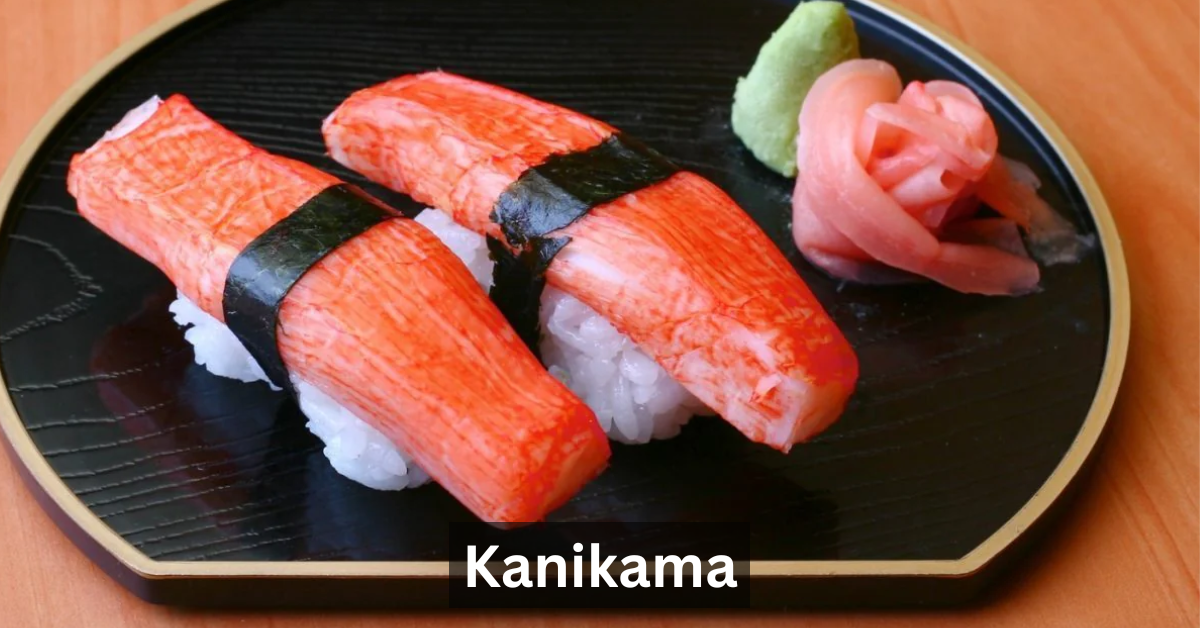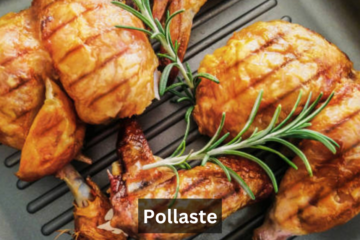Kanikama, often referred to as imitation crab, is a seafood product crafted from surimi, a paste made from fish. While it mimics the appearance and texture of real crab meat, kanikama is made primarily from fish, offering a more affordable and sustainable option for seafood lovers. It’s widely used in sushi rolls, salads, and various Asian-inspired dishes. Whether you’ve tasted it in a California roll or enjoyed it in a fresh salad, kanikama has earned its place as a versatile ingredient in many kitchens around the world.
One of the primary reasons kanikama has become such a beloved substitute for real crab is its affordability. Real crab can be expensive and difficult to source, especially for families and restaurants on a budget. Kanikama, on the other hand, provides a cost-effective, convenient, and accessible option for those craving the taste and texture of crab without breaking the bank. As the demand for seafood alternatives grows, kanikama has made its mark as a staple ingredient in many popular dishes.
The Origins of Kanikama
The Birth of Kanikama in Japan
The creation of kanikama can be traced back to Japan, where it was first developed in the 1970s. Sugiyo Co., Ltd., a Japanese company, is credited with revolutionizing the seafood industry by creating this innovative product. At the time, the Japanese were facing a shortage of affordable crab meat, leading Sugiyo to develop a substitute that was not only cheaper but also versatile enough for a variety of dishes.
How Sugiyo Co., Ltd. Revolutionized Seafood
Sugiyo’s invention of kanikama was a game-changer in the world of seafood products. By using surimi, which is derived from white fish like pollock, Sugiyo was able to replicate the texture, color, and flavor of crab meat. This breakthrough allowed chefs to create delicious, affordable sushi rolls and other seafood-based dishes without relying on actual crab. The product quickly gained popularity, and today kanikama can be found in kitchens and sushi restaurants around the world.
What is Kanikama Made Of?
The Surimi Process and Its Role in Kanikama
Surimi is the key ingredient that gives kanikama its distinct texture and flavor. It’s made by grinding fish, typically pollock, into a paste. The paste is then washed and processed to remove any fishy odors and impurities. The resulting mixture is seasoned, molded, and shaped into the familiar form of crab meat. The process of making surimi allows manufacturers to create a product that is similar to real crab but with a much lower cost.
Pollock and Other Fish Used in Production
While pollock is the most common fish used in surimi production, other fish species, such as hake and whiting, can also be utilized. Pollock is favored due to its mild flavor and firm texture, making it an ideal base for imitation crab products. Additionally, the abundance of pollock in the cold waters of the North Pacific makes it a sustainable and reliable choice for producers.
Ingredients and Additives in Kanikama
Kanikama typically contains a blend of fish paste, starch, egg whites, salt, and other seasonings. Some variations may include additives to enhance color or texture, such as natural crab extract or artificial flavorings. These ingredients help replicate the delicate flavor of real crab, while still maintaining the affordability and versatility of the product.
The Production Process of Kanikama
Step-by-Step Process: From Fish to Kanikama
The production of kanikama begins with the selection of high-quality fish, such as pollock. The fish are cleaned, filleted, and then ground into a fine paste known as surimi. This paste is washed to remove any excess fat and impurities. The cleaned surimi is then mixed with other ingredients like starch, egg whites, and seasonings to create the desired flavor and texture. The mixture is then shaped into sticks or flakes, cooked, and cooled before being packaged for distribution.
Quality Control and Packaging
Throughout the production process, strict quality control measures are in place to ensure that kanikama meets high standards of taste and texture. This includes inspecting the surimi for any inconsistencies and conducting sensory evaluations to guarantee that the final product tastes as close to real crab as possible. Once the kanikama has passed all quality checks, it is packaged and shipped to supermarkets, restaurants, and other distributors.
Kanikama vs. Real Crab Meat: A Nutritional Comparison
Nutritional Profile of Kanikama
Kanikama is often hailed as a healthy alternative to real crab meat, especially for those looking for a low-fat, low-calorie option. A typical serving of kanikama contains fewer calories and less fat than real crab, making it a great choice for those trying to maintain a healthy lifestyle. However, kanikama does have less omega-3 fatty acids and vitamin B12 than real crab, which are essential nutrients found in higher concentrations in authentic crab meat.
Health Benefits of Kanikama and Real Crab
While both kanikama and real crab are rich in protein and low in carbohydrates, they differ in their nutrient content. Real crab is an excellent source of omega-3 fatty acids, which are beneficial for heart health, as well as vitamin B12, which supports nerve function. Kanikama, on the other hand, is typically lower in these nutrients, but it can still be a good option for those who need a lower-calorie seafood choice. Both options can be part of a balanced diet, but it’s important to consider nutritional differences when making food choices.
How Kanikama Fits into a Balanced Diet
As a low-fat, low-calorie seafood option, kanikama can easily fit into a balanced diet. It provides a healthy amount of protein, while being a lighter choice compared to traditional seafood like crab. For those who are watching their caloric intake or seeking a more affordable seafood option, kanikama is an excellent addition to salads, sushi rolls, and stir-fries. It’s an ideal choice for those who want to enjoy seafood without the guilt.
Culinary Uses of Kanikama
Traditional Dishes Featuring Kanikama (e.g., Sushi, Gimbap)
Kanikama is a staple ingredient in many traditional Asian dishes. In Japan, it is most commonly used in sushi rolls, particularly the popular California roll. The mild flavor and delicate texture of kanikama make it the perfect filling for sushi, where it pairs beautifully with fresh avocado, cucumber, and rice. Kanikama is also featured in Korean gimbap, a dish similar to sushi, where it is often paired with vegetables and served as a snack or meal.
Modern Innovations: Fusion Cuisine and New Recipes
In recent years, chefs have embraced kanikama in fusion cuisine, using it in innovative dishes that blend traditional flavors with contemporary cooking techniques. From kanikama tempura to kanikama pasta, this versatile ingredient has become a favorite in both home kitchens and fine dining establishments. Whether incorporated into seafood salads or used as a topping for pizzas, kanikama is proving to be an adaptable and exciting ingredient for modern cooking.
Popular Kanikama Dishes: Sushi Rolls, Salads, and More
Kanikama’s popularity in dishes like sushi rolls and seafood salads is a testament to its versatility. Its mild taste and texture make it ideal for a variety of preparations, including stir-fries, soups, and even sushi bowls. The addition of fresh vegetables, such as avocado and cucumber, enhances the flavor and nutritional profile of kanikama dishes, making them a healthy and satisfying choice for seafood lovers.
The Global Popularity of Kanikama
Kanikama’s Rise Beyond Japan
Though originally from Japan, kanikama has gained widespread popularity around the world. Its affordability and versatility have made it a favorite ingredient in many countries, particularly in the United States, where sushi consumption has skyrocketed in recent years. Kanikama can now be found in supermarkets and restaurants in a variety of forms, from imitation crab sticks to pre-packaged sushi rolls.
Kanikama in Western and Global Cuisines
Beyond sushi, kanikama has found its place in global cuisine, especially in dishes that call for seafood alternatives. In Western countries, kanikama is often used in seafood salads, dips, and pasta dishes. Its ability to mimic the texture and flavor of crab meat makes it a popular choice for recipes that traditionally call for seafood, but at a fraction of the cost.
Kanikama in Sushi Restaurants Worldwide
Sushi restaurants across the globe have embraced kanikama as a staple ingredient, particularly in the creation of affordable sushi rolls. The California roll, which features kanikama, avocado, and cucumber, is one of the most well-known sushi rolls in Western countries. Its popularity has contributed to the widespread consumption of kanikama in sushi bars and restaurants worldwide.
The Benefits of Using Kanikama
Cost-Effectiveness and Accessibility
One of the primary benefits of kanikama is its affordability. Compared to real crab, which can be quite expensive, kanikama provides a cost-effective alternative for those looking to enjoy the taste and texture of crab without the high price tag. Its widespread availability in supermarkets and online stores also makes it an easily accessible option for home cooks and professional chefs alike.
Shelf Life and Storage Tips
Kanikama has a longer shelf life than fresh crab meat, which is an advantage for those who like to stock up on seafood products. It can be stored in the refrigerator or freezer, and its packaging is designed to keep it fresh for extended periods. For optimal freshness, it’s recommended to consume kanikama within a few days of opening, though it can typically be kept in the freezer for several months.
Convenience for Home Cooks and Professional Chefs
The convenience of kanikama cannot be overstated. Pre-packaged and ready to use, it requires minimal preparation, making it an ideal choice for both home cooks and professional chefs. Whether you’re making sushi at home or preparing a seafood salad for a dinner party, kanikama is a time-saving ingredient that doesn’t sacrifice taste or quality.
Common Myths About Kanikama
Debunking Misconceptions about Kanikama
Many people assume that kanikama is inferior to real crab meat, but this is simply not true. While it’s true that kanikama has a different nutritional profile than real crab, it still offers a delicious and affordable alternative that’s perfect for a wide range of dishes. Kanikama is also highly versatile and can be used in many of the same ways as real crab meat.
Is Kanikama Healthy? Addressing Nutritional Concerns
Kanikama is often regarded as a healthier option than other seafood, especially when compared to fattier options like lobster or shrimp. It is low in calories and fat, making it a good choice for those looking to maintain a healthy diet. However, it’s important to note that kanikama is also lower in essential nutrients like omega-3 fatty acids and vitamin B12 compared to real crab. Despite this, it can still be part of a well-balanced and nutritious diet.
The Truth About Additives in Kanikama
Some critics argue that kanikama contains too many additives, but most modern production processes focus on using high-quality, natural ingredients to create a product that tastes as close to real crab as possible. While certain preservatives and flavorings may be used, the quality of kanikama has improved significantly over the years, making it a safe and delicious option for consumers.
Fun Facts and Trivia About Kanikama
Surprising Global Statistics
Kanikama is consumed in vast quantities worldwide, particularly in the United States, where it is a cornerstone of the sushi industry. In fact, it is estimated that over 80% of sushi rolls sold in the U.S. contain some form of imitation crab. This widespread popularity speaks to kanikama’s unique ability to replicate the taste and texture of real crab while being more affordable.
Cultural Significance and Popularity
Kanikama is not only a convenient seafood alternative, but it also holds cultural significance. In Japan, it’s often seen as an accessible way to enjoy the taste of crab without the high cost, and it has become a staple in Japanese cuisine. Its global rise has cemented its place as a versatile and beloved seafood alternative.
Delicious Kanikama Recipes
Step-by-Step Guides:
- Kanikama Sushi Rolls
- Kanikama Salad
- Kanikama Tempura
- Kanikama Pasta
Tips for Cooking and Serving Kanikama
The best way to enjoy kanikama is by pairing it with fresh vegetables, sushi rice, and a drizzle of soy sauce. You can easily incorporate it into various dishes, from sushi rolls to pasta, to bring a touch of the ocean to your plate. Remember, kanikama doesn’t need to be cooked, but it can be gently heated or used in cooked dishes for added flavor and texture.
Conclusion
Kanikama is a must-have ingredient for any seafood lover. Its versatility, affordability, and ability to mimic the taste and texture of crab meat make it an invaluable addition to a wide range of dishes. Whether you’re preparing sushi at home or experimenting with new recipes, kanikama can be your go-to ingredient for delicious, budget-friendly meals.
As a sustainable, healthy, and delicious seafood alternative, kanikama is here to stay. It allows you to enjoy the flavors of the ocean without compromising on cost or quality. With its growing popularity, there’s no better time to embrace kanikama in your cooking.
Kanikama is a remarkable ingredient that brings joy to kitchens around the world. From sushi rolls to pasta, this imitation crab offers a healthy, affordable, and tasty alternative for all your favorite seafood dishes.
Frequently Asked Questions
What is kanikama made from?
Kanikama is made from surimi, a fish paste typically made from pollock, which is processed to mimic the texture and taste of crab meat.
Is kanikama healthy?
Kanikama is low in calories and fat, making it a healthy seafood alternative. However, it’s lower in omega-3 fatty acids and vitamin B12 compared to real crab.
How should you store kanikama?
Kanikama should be stored in the refrigerator or freezer, depending on whether it’s been opened. Once opened, it’s best to consume it within a few days for optimal freshness.
Can you cook kanikama?
While kanikama is often used in its pre-cooked form, it can be gently heated or added to cooked dishes like pasta or stir-fries for added flavor.
What are some popular dishes that use kanikama?
Kanikama is commonly used in sushi rolls, like the California roll, salads, tempura, and even pasta dishes.
Stay in touch to get more updates & alerts on WashingtonGreek! Thank you



